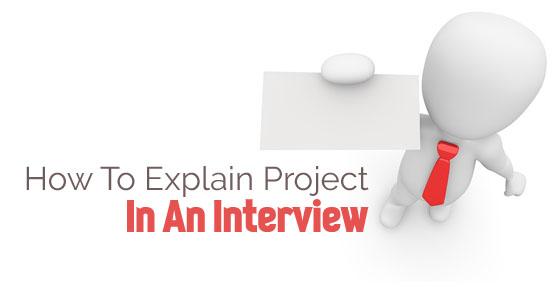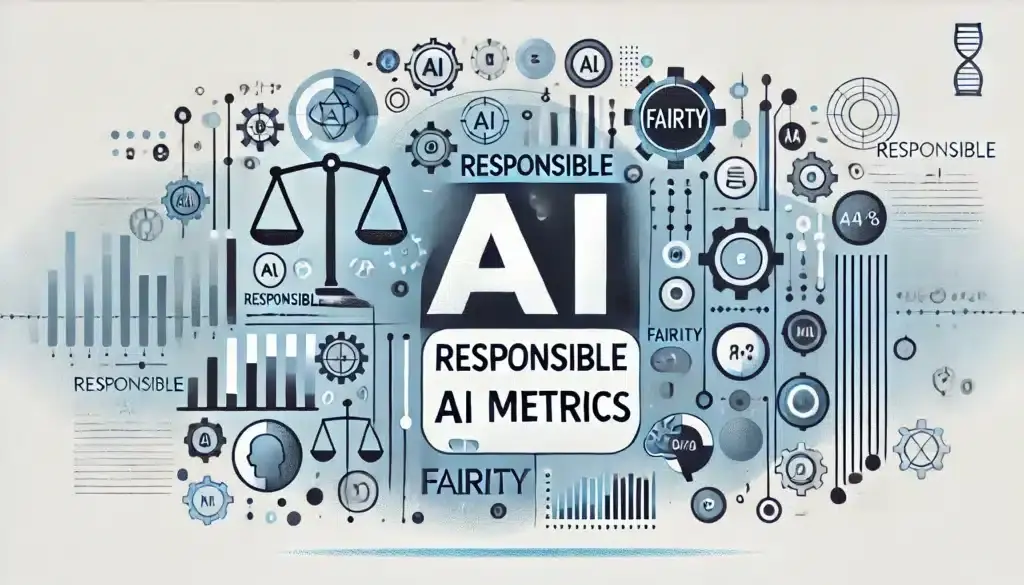Introduction: The New Reality of AI Hiring-It’s Not a Sprint, It’s a Loop
Gone are the days when one strong technical interview could land you a machine learning job at a top company.
Today, the hiring process for AI and ML roles is a multi-round, multi-dimensional loop, one that tests not just your ability to code, but your ability to communicate, reason, design, and think like a long-term product owner.
In 2025, this “AI Hiring Loop” is how companies like Google DeepMind, OpenAI, Anthropic, Meta, and Amazon separate technical talent from engineering maturity.
Each stage in the process is carefully designed to answer one core question:
Can this person build, scale, and deliver real-world AI systems, collaboratively and responsibly?
Why the Process Feels Like a Loop (and Not a Line)
Unlike linear hiring pipelines, the modern AI interview process is iterative.
Recruiters, engineers, and hiring committees all loop back to evaluate you holistically across rounds. A weak coding performance might be balanced by a strong design interview, but inconsistency, especially in communication or ownership, often leads to rejection.
Each stage examines a different signal:
- Recruiter Screen: Fit and alignment.
- Technical Round: Baseline engineering rigor.
- System Design: Architecture, trade-offs, and scalability.
- Behavioral & Cross-Functional: Communication and collaboration.
- Hiring Committee: Long-term impact and culture fit.
Understanding these dimensions isn’t just about preparation, it’s about strategy.
You’re not being tested for one skill; you’re being evaluated for how consistently you think and act like a high-level ML professional.
The Hidden Truth Behind AI Interview Loops
Most candidates assume AI interviews are all about algorithms and model accuracy. But top companies care equally about your ability to explain decisions, work across teams, and design for impact.
The best candidates approach the hiring loop like a well-trained model:
- They generalize across rounds, not overfit to one type of question.
- They debug their performance after each loop.
- They learn, iterate, and improve.
As pointed out in Interview Node’s guide “From Interview to Offer: InterviewNode’s Path to ML Success”, interview loops are not hurdles, they’re feedback systems. Each round gives you signal data about how to grow, communicate, and eventually convert an interview into an offer.
The Goal of This Blog
In this guide, we’ll break down:
- How each round of the AI hiring loop works.
- What interviewers evaluate at every stage.
- Why candidates with strong skills still fail.
- And how to prepare holistically using strategies tested across FAANG and AI-first companies.
By the end, you’ll understand the entire lifecycle of an AI interview loop, and how to play it like a pro.
Section 1: Understanding the Modern AI Hiring Loop
Before you can master the process, you need to understand what it’s designed to measure.
The AI hiring loop isn’t random, it’s a structured evaluation system that companies like Google, Meta, and OpenAI use to identify candidates who can succeed not just technically, but organizationally.
Think of it like an ML model evaluation pipeline: every round tests a different “dimension” of your performance.
You’re not just being assessed on accuracy, but also generalization, interpretability, and robustness.
a. The Typical Structure
Most AI and ML interview processes follow a five- to six-stage structure, though the exact order may vary:
- Recruiter Screen – Assessing alignment, motivation, and clarity.
- Technical Screen – Verifying your fundamentals: coding, data structures, and ML basics.
- ML System Design Round – Testing your ability to architect scalable, real-world solutions.
- Model or Research Deep Dive – Evaluating depth of understanding and reasoning.
- Behavioral or Cross-Functional Round – Measuring collaboration, ownership, and communication.
- Hiring Committee / Bar Raiser – A final evaluation of consistency and potential.
Each stage contributes its own “signal,” and the decision is made by combining these signals, not by any one round alone.
That’s why you might ace the coding round but still fall short overall if you fail to show leadership or business awareness.
b. What’s Actually Being Measured
The AI hiring loop is designed to assess three core dimensions:
- Technical Strength: Your command of algorithms, coding, and ML tools.
- Architectural Thinking: Your ability to build scalable, maintainable systems.
- Impact Orientation: Your understanding of how AI translates into user or business value.
In FAANG interviews, interviewers are looking for engineers who can operate across all three layers, not just one.
A technically brilliant candidate who can’t explain trade-offs, or a communicator who can’t debug a data pipeline, will both struggle to pass the loop.
c. Why It’s Called a Loop
Because feedback from every stage loops back into the decision process.
For example, if you perform strongly in system design but moderately in behavioral, interviewers might revisit notes to see if you displayed leadership implicitly in earlier rounds.
As highlighted in Interview Node’s guide “FAANG ML Interviews: Why Engineers Fail & How to Win” highlights, success depends on consistency across interviews, not isolated brilliance.
You’re not just passing tests; you’re demonstrating patterns of excellence.
Key Takeaway
Treat the hiring loop as an integrated evaluation system, not a checklist.
Every round tells part of your story. The best candidates make sure all those parts align to communicate one consistent message:
“I build reliable, scalable, and impactful AI systems, and I do it collaboratively.”
Section 2: The Recruiter Screen, First Gatekeeper
Every AI hiring loop begins with a single conversation, and for many candidates, that first recruiter screen determines whether they’ll make it any further.
It might seem like a casual chat, but it’s far more strategic than most realize.
Recruiters are the first evaluators in the loop, and their goal isn’t to test your technical skill. It’s to validate your fit, communication, and alignment with the role’s objectives and the company’s AI mission.
a. What Recruiters Are Actually Looking For
In these 20–30-minute calls, recruiters typically assess four things:
- Role Alignment:
Do your experiences match the job description? If the position emphasizes applied ML for personalization, and your background is mostly in NLP research, they’ll probe how adaptable you are. - Communication Clarity:
Can you explain your work simply and concisely? AI recruiters often serve as the first filter for clarity, not complexity. - Motivation Fit:
They’ll want to know why you’re interested in their company and not just the title. This checks whether you understand their mission (for example, Meta’s focus on generative AI or Anthropic’s on safety). - Logistics and Compensation:
This is the practical layer, availability, work authorization, and compensation expectations.
What they’re really measuring is your ability to articulate value in human terms.
b. How to Prepare
- Research the company’s AI strategy:
Know the difference between OpenAI’s model research culture and Amazon’s applied ML focus. - Craft your “narrative headline”:
Be ready with a one-sentence version of your story:
“I’m an ML engineer specializing in building scalable recommendation systems that drive measurable business growth.”
- Speak to outcomes:
Mention measurable results early, this signals maturity.
Remember, this isn’t a coding test. It’s a fit validation, recruiters are scanning for consistency between your résumé and your voice.
c. Green Flags Recruiters Love
- You speak clearly about technical results in accessible language.
- You reference recent company AI initiatives (“I saw your new LLM integration in production, fascinating work”).
- You show excitement about impact, not just tools or frameworks.
d. Red Flags That End Calls Early
- Overly technical monologues.
- Unclear goals (“I’m open to anything”).
- Negative talk about past employers.
- Inconsistent résumé and verbal explanation.
Recruiters are storytellers, they’ll have to sell you to hiring managers. If your story is strong, they’ll advocate for you.
As emphasized in Interview Node’s guide “Building Your ML Portfolio: Showcasing Your Skills”, every part of your professional presentation, résumé, LinkedIn, and recruiter call, should reinforce one clear, data-backed message: You deliver measurable AI results.
Section 3: The Technical Screen-Proving Baseline Competence
Once you’ve passed the recruiter screen, you’ll enter the technical screening phase, the stage where most candidates are filtered out.
This round isn’t about creativity or deep design thinking yet. It’s about demonstrating that you can write clean, correct, and efficient code under pressure while reasoning through ML-adjacent problems.
For many AI and ML roles, the technical screen is the first “real test” of whether your fundamentals are solid.
a. What Companies Are Testing
The technical screen is designed to answer one core question:
“Can this candidate code at the level expected of our engineers?”
It’s not a research interview or a production deep dive, it’s a competency check across three dimensions:
- Coding and Problem Solving:
You’ll solve algorithmic or data manipulation problems (often in Python).
Think: array operations, hash maps, graph traversal, or matrix computation. - ML Fluency:
You might face basic ML or statistics questions, e.g., bias-variance tradeoff, regularization, or model evaluation metrics. - Communication:
How clearly do you express your thought process? Can you verbalize trade-offs or spot errors in real time?
Even if the challenge is purely coding-based, interviewers will watch how you think, not just what you code.
b. Example Technical Prompts
Here’s what a typical ML-focused technical screen might look like:
- “Given a large log dataset, identify anomalies in user activity efficiently.”
- “Implement cosine similarity for document vectors.”
- “Design a function to calculate moving averages from streaming data.”
In hybrid ML interviews, you might be asked to pseudo-code parts of a model pipeline or explain how you’d debug convergence issues in gradient descent.
At Amazon, for instance, ML candidates often encounter data-structure-heavy problems tied to real ML workflows, merging logs, optimizing retrieval, or caching embeddings efficiently.
c. What Interviewers Value Most
- Clarity of Explanation:
Talk through your approach before coding.
This signals problem decomposition skills, vital for collaborative work. - Code Hygiene:
Use meaningful variable names, handle edge cases, and consider complexity (both time and space). - Composure:
Don’t panic if you hit a roadblock. Interviewers evaluate recovery as much as correctness.
d. What Separates Top Performers
Candidates who succeed don’t rush to write, they translate the problem into a structured plan.
They use small examples, verbalize assumptions, and validate logic before execution.
They also make subtle but powerful moves like:
- Explaining why they chose a particular data structure.
- Mentioning potential bottlenecks.
- Suggesting improvements after solving (“This could be parallelized using multiprocessing”).
These behaviors show engineering maturity, not just coding skill.
e. Preparation Tips
- Practice ML-relevant LeetCode problems (like matrix manipulation, streaming data, and combinatorics).
- Review common libraries: NumPy, pandas, PyTorch basics.
- Rehearse your thought narration: every line of code should connect to an idea.
- Do mock sessions under time pressure to simulate the real loop.
As emphasized in Interview Node’s guide “Crack the Coding Interview: ML Edition by InterviewNode”, strong technical screens aren’t about perfection, they’re about clarity, composure, and confidence.
Section 4: The ML System Design Round-Scaling Your Thinking
The ML System Design round is where the interview loop shifts from “Can you code?” to “Can you think like an architect?”
At this stage, FAANG and AI-first companies evaluate whether you can design systems that are not only technically sound but also scalable, maintainable, and data-efficient.
This round separates implementers from builders, those who can think end-to-end, from data ingestion to model serving.
a. The Goal of the Round
This interview tests your ability to design a machine learning solution at production scale.
The interviewer wants to know:
- Can you translate vague business problems into technical architectures?
- Do you understand trade-offs between modeling accuracy, latency, and scalability?
- Are you aware of data dependencies, monitoring, and deployment challenges?
Your diagrams and explanations should demonstrate systems-level reasoning, how data flows, how components interact, and how failure is mitigated.
b. Common Prompts
Some typical ML system design questions include:
- “Design a recommendation system for YouTube or Netflix.”
- “How would you build a real-time anomaly detection pipeline for transaction data?”
- “Design an architecture for large-scale A/B testing in an ML environment.”
- “How would you deploy and monitor a model used by millions of users daily?”
These questions test your ability to balance performance, reliability, and cost.
c. Key Areas Interviewers Evaluate
- Data Pipeline Design:
How would you collect, clean, and store massive datasets?
Do you mention batch vs. streaming choices, ETL tools, or data validation frameworks? - Model Training and Versioning:
How do you retrain models as data evolves?
Do you mention reproducibility, model registries, or experiment tracking? - Serving and Monitoring:
How will your model serve predictions at scale?
What’s your plan for drift detection, latency reduction, or rollback? - Trade-Off Discussion:
Interviewers love candidates who articulate trade-offs:
“I’d use approximate nearest neighbors for faster inference, but this may slightly reduce recall.”
That single sentence can elevate your performance dramatically.
d. Communication is Everything
Remember, you’re being judged on how you think.
Structure your explanation in logical steps:
- Clarify the problem and success metrics.
- Define components (data, model, infra).
- Discuss trade-offs and alternatives.
- Conclude with monitoring and scaling strategy.
Visualize as you speak, a simple flow (data → feature store → model training → inference → monitoring) helps interviewers follow your reasoning.
e. How to Prepare
- Review key concepts like feature stores, CI/CD for ML, and distributed training.
- Practice 3–4 design questions end-to-end, not just coding solutions.
- Focus on communication, half your score depends on clarity.
As emphasized in Interview Node’s guide “Mastering ML System Design: Key Concepts for Cracking Top Tech Interviews”, ML design interviews are less about architecture diagrams and more about demonstrating engineering maturity, scalability thinking, and real-world pragmatism.
Section 5: The Research or Model Deep Dive-Proving Depth, Not Breadth
By the time you reach the research or model deep-dive round, you’ve already demonstrated technical competence and architectural reasoning.
Now, interviewers want to assess something much harder to fake, depth of understanding.
This round reveals whether you’ve truly internalized the principles behind your work or if you’re just replicating patterns and frameworks.
It’s where FAANG, DeepMind, and OpenAI interviewers distinguish true ML engineers and researchers from mere implementers.
a. The Purpose of the Deep Dive
This round focuses on your ability to:
- Explain the mathematical and conceptual reasoning behind your models.
- Defend design decisions and trade-offs.
- Discuss failure modes and how you’d debug or iterate.
- Show awareness of recent advancements and research trends.
Essentially, interviewers are checking for intellectual ownership, did you build your project, or did you just use someone else’s pipeline?
b. Common Deep-Dive Prompts
Expect open-ended yet targeted questions such as:
- “Walk me through a model you’ve built, why did you choose that algorithm?”
- “How did you evaluate your model beyond accuracy?”
- “What would you change if your dataset doubled in size?”
- “What biases could appear in your training data, and how would you mitigate them?”
- “If your model underperforms on certain user segments, how do you debug it?”
The key here isn’t to show that your project was perfect, it’s to show that you understand every layer of it and can reason critically about limitations.
c. What Interviewers Are Evaluating
- Conceptual Depth:
Can you explain your approach in both plain language and technical rigor?
If you mention “gradient clipping” or “attention masking,” can you explain why it mattered in context? - Experimental Thinking:
Do you discuss how you designed experiments, measured success, and iterated?
Great candidates talk about process, not just results. - Research Awareness:
Are you aware of recent advancements in your domain?
For instance, if you built a transformer, can you discuss model compression or instruction-tuning trade-offs? - Ownership and Impact:
Do you communicate how your work contributed to broader team goals or business outcomes?
d. How to Prepare for This Round
- Revisit your portfolio projects:
Know them inside-out, from data preprocessing to evaluation metrics. - Practice explaining models simply:
Pretend you’re describing your model to a non-technical PM. - Follow recent research:
Be ready to mention new architectures, benchmarks, or methods relevant to your work. - Reflect on “lessons learned”:
Mention what you’d do differently next time. This shows growth and maturity.
e. The FAANG Approach
At companies like Anthropic or Google DeepMind, this round can also include a whiteboard theory test:
- Deriving gradient updates for loss functions.
- Discussing overfitting mitigation strategies.
- Explaining attention mechanisms or scaling laws.
Don’t panic if you’re not a Ph.D., they’re testing reasoning, not memorization.
As highlighted in Interview Node’s guide “The Impact of Large Language Models on ML Interviews”, understanding why and how a model works now carries more weight than raw implementation skills.
Interviewers want candidates who can think like researchers, curious, analytical, and pragmatic.
why and how a model works now carries more weight than raw implementation skills.
Interviewers want candidates who can think like researchers, curious, analytical, and pragmatic.
Section 6: The Behavioral and Cross-Functional Round-Beyond Algorithms
By this point in the hiring loop, the company already knows you can code, design, and reason about ML systems.
Now they want to know who you are as a collaborator, how you communicate, handle conflict, and deliver results when stakes are high.
This is the behavioral and cross-functional round, and while it may seem softer than the technical ones, it often determines the final hiring outcome.
a. What Interviewers Are Looking For
At companies like Google, Meta, and OpenAI, behavioral rounds aren’t about rehearsed answers, they’re about patterns of behavior.
Interviewers are trained to detect qualities like:
- Ownership: Do you take responsibility beyond your assigned tasks?
- Adaptability: Can you handle ambiguity and shifting priorities?
- Communication: How clearly can you explain technical trade-offs to non-engineers?
- Collaboration: Do you elevate your team or compete with it?
FAANG and AI-first organizations rely heavily on cross-functional teamwork, data scientists, ML engineers, and product managers working side by side.
They need people who can communicate complex models in clear, actionable terms.
b. The STAR+IMPACT Storytelling Method
The most effective candidates use a structured yet natural storytelling technique:
Situation → Task → Action → Result → IMPACT
Example:
“Our model’s false positives were frustrating users (S). I led a small team to analyze drift and redesign the labeling schema (T). We implemented a hybrid validation pipeline using human-in-the-loop feedback (A). Accuracy improved by 8% and complaints dropped 30% (R). That directly increased retention in our beta users (IMPACT).”
Short, specific, and quantifiable, exactly what interviewers love.
c. Common Behavioral Prompts
- “Tell me about a time you disagreed with a teammate.”
- “Describe a situation where you failed and what you learned.”
- “Give an example of influencing a decision without authority.”
- “How do you communicate technical ideas to leadership?”
Each question maps to a soft skill that correlates with seniority and leadership readiness.
d. Pro Tip: Tie Back to Measurable Results
Whenever possible, anchor your story in numbers:
“We reduced latency by 20%” or “The project launched two months early.”
Quantifying impact, even in behavioral answers, boosts credibility instantly.
As explained in Interview Node’s guide “Soft Skills Matter: Ace 2025 Interviews with Human Touch” explains, your ability to humanize your technical work is one of the strongest predictors of interview success, especially for ML engineers aspiring to leadership roles.
Section 7: Common Traps in the AI Hiring Loop-Why Great Engineers Still Get Rejected
Every year, thousands of highly qualified ML engineers apply to FAANG and AI-first companies, and many of them fail, not because they lack technical skills, but because they fall into predictable behavioral and strategic traps.
These pitfalls occur throughout the hiring loop, subtle mistakes that compound over multiple rounds and quietly derail even the most promising candidates.
Understanding these traps (and how to avoid them) is key to turning strong performance into a final offer.
a. Trap #1: Treating Every Round as Separate
Many candidates approach each round as an isolated event.
They code in one round, design in another, and discuss leadership later, without realizing the hiring committee evaluates them holistically.
Inconsistency across rounds, for example, explaining a project one way in technical design and another way in behavioral, raises red flags about communication and authenticity.
✅ Fix: Maintain a unified narrative throughout the loop.
Use the same examples, numbers, and themes consistently.
Your story should flow logically across rounds: what you built, how you scaled it, how it created impact.
b. Trap #2: Over-Indexing on Technical Perfection
It’s tempting to obsess over code or model precision, but interviewers are often more impressed by structured reasoning and trade-off awareness than flawless code.
If you spend 30 minutes debugging syntax but never explain why your approach works, you’ve lost valuable signal.
✅ Fix: Prioritize clarity over cleverness.
Talk through your design, communicate constraints, and show your thought process.
c. Trap #5: Failing to Learn from Feedback
The best candidates treat rejections as training data, not dead ends.
They analyze weak points, adjust strategies, and improve iteration over iteration.
As highlighted in Interview Node’s guide “Why Software Engineers Keep Failing FAANG Interviews”, the difference between failure and eventual success often lies in how effectively you learn from each loop.
Just like in ML, your interview preparation should be an iterative process, test, evaluate, retrain, and improve.
Section 8: Conclusion-Turning the Hiring Loop into a Growth Loop
If you’ve made it this far, you’ve already understood what most candidates never do: the AI hiring process isn’t a test of perfection, it’s a systematic evaluation of consistency, clarity, and impact.
Each round in the hiring loop measures a different signal, but collectively, they answer one overarching question:
“Can this engineer think, communicate, and execute like a long-term builder of AI systems?”
Those who succeed treat the process not as a gauntlet, but as a feedback loop, an opportunity to learn how top organizations evaluate engineers.
And once you learn to navigate that loop effectively, you not only ace interviews, you level up as an engineer.
The Meta-Skill That Wins Offers
FAANG and AI-first companies don’t just hire for skill; they hire for signal clarity.
They look for candidates who demonstrate:
- Technical precision without ego.
- Communication without fluff.
- Curiosity without arrogance.
The secret is not about overperforming in one round, it’s about aligning your strengths into a consistent narrative across all of them.
Every part of your loop, recruiter, coding, design, and behavioral, is a chapter in your story.
Tell it with intention, and you’ll stand out as someone who not only knows machine learning but also understands how it creates real-world impact.
As emphasized in Interview Node’s guide “FAANG Coding Interviews Prep: Key Areas and Preparation Strategies”, the highest-rated candidates are not the fastest coders or the most eloquent talkers, they’re the ones who connect the dots between technical excellence, teamwork, and value creation.
10 Frequently Asked Questions (FAQs)
1. How long does the AI hiring loop typically take?
Most major companies complete the loop within 3–6 weeks, though some (like OpenAI or Anthropic) have longer research phases.
Expect 4–6 total rounds, with 1–2 days of onsite or virtual interviews toward the end.
2. What’s the most important round to focus on?
None individually, consistency matters most.
You could recover from a slightly weaker coding round if your system design and behavioral rounds show high maturity and ownership.
3. How should I prepare for multiple back-to-back interviews?
Simulate multi-round fatigue in practice.
Do two mock interviews in a row to test endurance and focus.
Hydrate, take micro-breaks, and keep short mental resets between rounds.
4. How do FAANG companies weigh technical vs. behavioral performance?
Technical competence opens the door, but behavioral strength closes it.
Hiring committees give 30–40% weight to collaboration, communication, and leadership indicators, especially for senior roles.
5. What’s the best way to recover from a weak round?
Don’t dwell on it.
Interviewers are trained to score independently.
Focus on anchoring later rounds with strength, for example, reinforcing technical reasoning or ownership in your next discussion.
6. Should I use the same project examples across different rounds?
Yes, as long as you tailor the focus.
Use one example to show technical excellence in design, and the same one to highlight teamwork or impact in behavioral rounds.
Consistency reinforces credibility.
7. How do I stand out to a Bar Raiser or Hiring Committee?
Show patterned excellence.
You don’t need to wow them with complexity, show clear, replicable habits: communication clarity, measured trade-offs, quantifiable results, and calm under stress.
8. What if I’m coming from academia or research?
Translate research impact into production language.
Instead of “I published in NeurIPS,” say,
“Our research improved model training efficiency by 22%, later integrated into open-source frameworks.”
They want applied thinkers, not just theoreticians.
9. How can I evaluate if the company is a good fit for me?
Ask questions during your loop:
- “How are ML models monitored post-deployment?”
- “How does your team balance innovation with responsible AI?”
If interviewers answer thoughtfully, that’s a positive cultural signal.
10. How can InterviewNode help me succeed across all rounds?
InterviewNode offers AI-powered mock interview loops, mirroring real multi-round FAANG processes.
You’ll train across:
- Coding: realistic ML-aligned problem sets.
- System Design: end-to-end architecture exercises.
- Behavioral: guided STAR+IMPACT feedback.
Each mock session is reviewed by both AI and human mentors, offering actionable feedback.
That means your learning becomes iterative, just like an AI model improving on each epoch.
By the time you enter a real hiring loop, you won’t just be ready, you’ll be optimized.
Closing Thoughts
The AI hiring loop isn’t just an obstacle course, it’s a reflection of how great companies build great teams.
It rewards consistency, humility, and measurable impact.
When you approach it like a well-designed model, tuning parameters, learning from feedback, and generalizing across contexts, you don’t just get hired.
You become the kind of engineer who leads future AI projects.
The key isn’t to chase perfection.
It’s to demonstrate progress, clarity, and impact, round after round.






